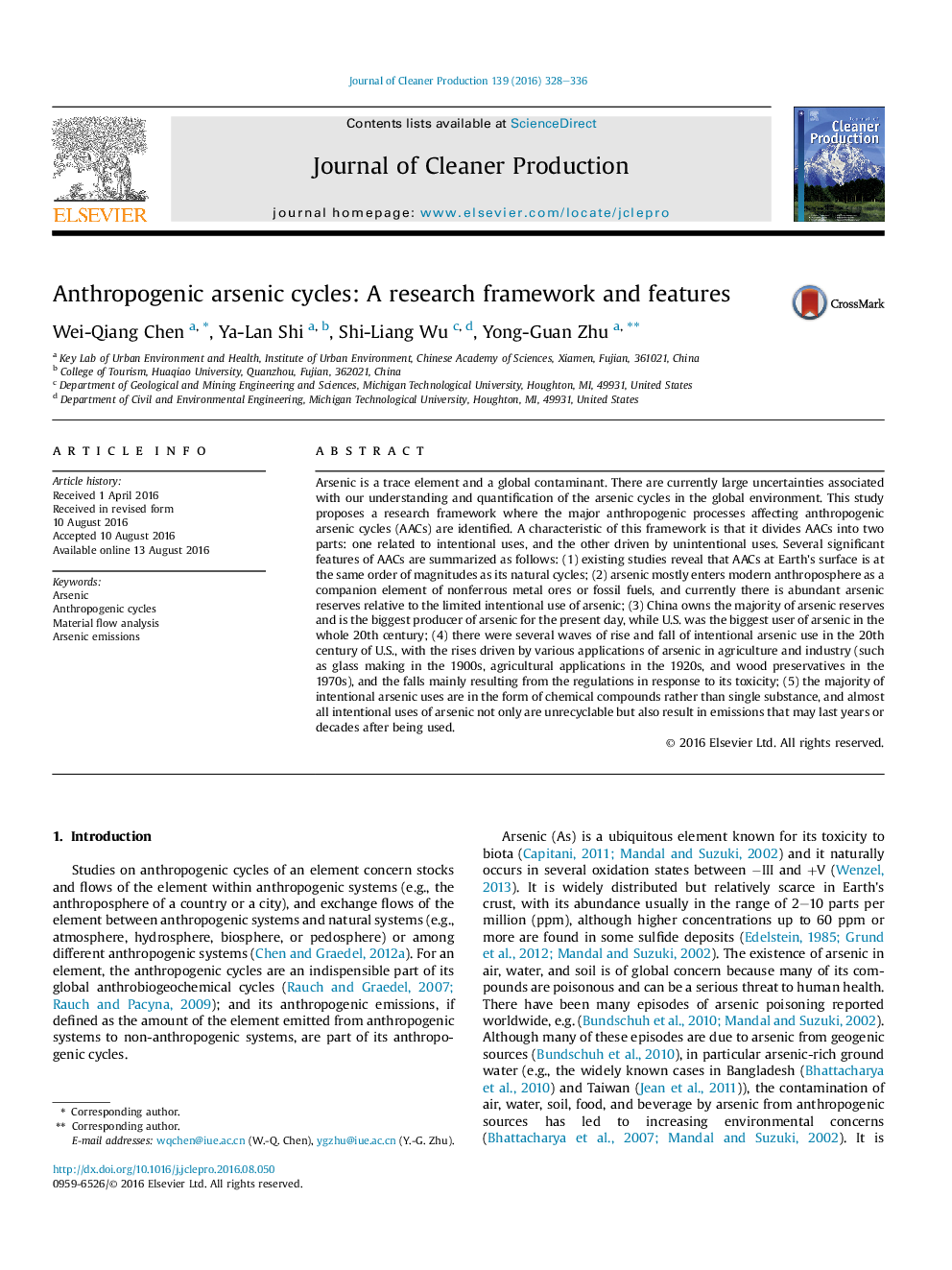| کد مقاله | کد نشریه | سال انتشار | مقاله انگلیسی | نسخه تمام متن |
|---|---|---|---|---|
| 8100540 | 1522113 | 2016 | 9 صفحه PDF | دانلود رایگان |
عنوان انگلیسی مقاله ISI
Anthropogenic arsenic cycles: A research framework and features
ترجمه فارسی عنوان
چرخه آرسنیک انسان شناسی: یک چارچوب تحقیق و ویژگی ها
دانلود مقاله + سفارش ترجمه
دانلود مقاله ISI انگلیسی
رایگان برای ایرانیان
کلمات کلیدی
آرسنیک، چرخه های انسان شناسی، تجزیه و تحلیل جریان جریان، انتشار آرسنیک،
موضوعات مرتبط
مهندسی و علوم پایه
مهندسی انرژی
انرژی های تجدید پذیر، توسعه پایدار و محیط زیست
چکیده انگلیسی
Arsenic is a trace element and a global contaminant. There are currently large uncertainties associated with our understanding and quantification of the arsenic cycles in the global environment. This study proposes a research framework where the major anthropogenic processes affecting anthropogenic arsenic cycles (AACs) are identified. A characteristic of this framework is that it divides AACs into two parts: one related to intentional uses, and the other driven by unintentional uses. Several significant features of AACs are summarized as follows: (1) existing studies reveal that AACs at Earth's surface is at the same order of magnitudes as its natural cycles; (2) arsenic mostly enters modern anthroposphere as a companion element of nonferrous metal ores or fossil fuels, and currently there is abundant arsenic reserves relative to the limited intentional use of arsenic; (3) China owns the majority of arsenic reserves and is the biggest producer of arsenic for the present day, while U.S. was the biggest user of arsenic in the whole 20th century; (4) there were several waves of rise and fall of intentional arsenic use in the 20th century of U.S., with the rises driven by various applications of arsenic in agriculture and industry (such as glass making in the 1900s, agricultural applications in the 1920s, and wood preservatives in the 1970s), and the falls mainly resulting from the regulations in response to its toxicity; (5) the majority of intentional arsenic uses are in the form of chemical compounds rather than single substance, and almost all intentional uses of arsenic not only are unrecyclable but also result in emissions that may last years or decades after being used.
ناشر
Database: Elsevier - ScienceDirect (ساینس دایرکت)
Journal: Journal of Cleaner Production - Volume 139, 15 December 2016, Pages 328-336
Journal: Journal of Cleaner Production - Volume 139, 15 December 2016, Pages 328-336
نویسندگان
Wei-Qiang Chen, Ya-Lan Shi, Shi-Liang Wu, Yong-Guan Zhu,
